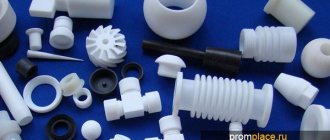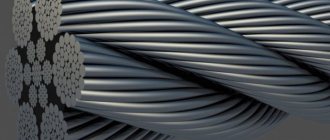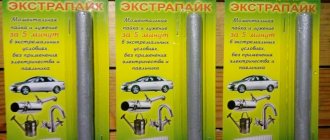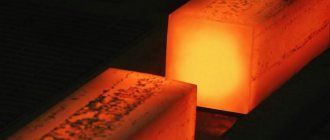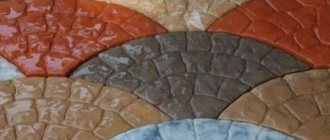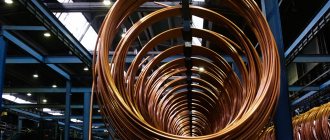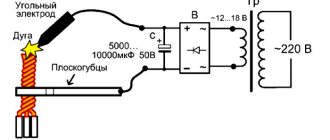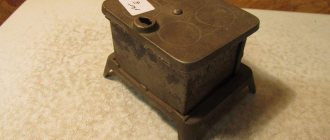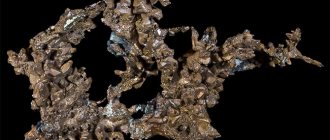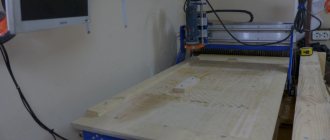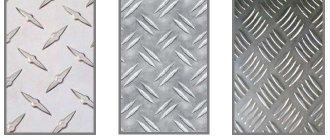“Iron casting” has been known to mankind since time immemorial. Nowadays, it is widely used in many areas of the national economy and is called cast iron. And while the average person may not know about crankshafts, gear housings, wheel hubs, fittings, everyone knows about frying pans, cast iron pots, radiators, bathtubs, grates and other cast iron products.
The metallurgical industry produces various simple and special types of cast iron, each of which has its own scope of application.
Features of cast iron
Cast iron is an iron-carbon alloy, smelted using fuel from magnetic, red or brown iron ore, with the addition of special inorganic substances - fluxes.
Many people do not see the fundamental differences between steel and cast iron, mistakenly assuming that they are the same thing.
Both metallurgical products are alloys - they consist of several components, one of which is iron.
Cast iron is the raw material for steel production.
Technological properties:
- for steel – deformation (stamping, rolling, forging);
- for cast iron - foundries.
Presence of carbon:
- steel – 0.02 – 2.14%;
- cast iron - 2.14 - 6.67%.
External differences:
- cast iron is dark and matte;
- the steel is silvery and shiny.
Various physical characteristics
For cast iron:
- higher casting qualities;
- easy to cut;
- has less weight;
- lower melting point.
The disadvantages of cast iron include:
- low plasticity;
- fragility;
- weakly susceptible to forging and welding.
Cast iron has a low cost and is cheaper than steel.
Additives and impurities
All supplied cast iron is regulated by GOSTs in terms of its chemical composition and impurity content. Cast iron casting, in addition to iron, contains some “ingredients” that affect the final product and add certain features:
- carbons – increase the hardness of the alloy;
- silicon – improves casting qualities;
- manganese – gives strength;
- sulfur - “thickens” and limits the fluidity of cast iron.
- Phosphorus causes cracks to form when cold and reduces mechanical parameters.
In order to improve the starting material, cast iron is alloyed, that is, various alloying additives are introduced that change the physical and/or chemical properties.
Alloying additives:
- zirconium;
- aluminum;
- molybdenum;
- titanium;
- vanadium;
- copper;
- chromium.
Cast irons with a high content of silicon and manganese in their composition are classified as alloyed.
Maraging high-strength steels
Maraging high-alloy steels have significant strength, which can be increased by the release of secondary phases (precipitates). These are alloys of iron with nickel (8...22%), sometimes with cobalt and a very low carbon content (less than 0.03%). For aging in martensite, alloys are alloyed with titanium, molybdenum, and tungsten. Nickel and cobalt reduce the solubility of alloying additives in a-iron (Fe), which leads to aging hardening and increases resistance to brittle fracture. The carbon content is low because the relatively high nickel content leads to the formation of graphite in the structure, which can cause a decrease in the strength and hardness of the steel.
A typical heat treatment involves heating the steel above 830°C and cooling it in air. The result is carbon-free martensite. Subsequent mechanical treatment and deformation of the steel lead to an increase in its hardness by releasing precipitates when heated above 500°C for two or three hours. Before treatment, the material has a typical tensile strength of about 700 MPa, or MNm2, and a hardness of 300 HV, while after treatment, respectively, about 1700 MPa, or MNm2, and 550 HV.
(See Compositions of maraging steels and Mechanical properties of maraging steels.)
Classification of cast irons
The metallurgical industry produces different types of cast iron. The grade depends on the forms of graphite or cementite and other components involved in the alloy.
Gray cast iron (GC)
Designated by the letters SCH. In cross-section it is grayish-black, which is due to the presence of graphite, this natural color. The composition also contains various impurities, including silicon. This type of cast iron, which can be easily cut and is often used in the engineering industry for “minor” parts, becomes fluid when phosphorus is added. Suitable for all types of casting, including artistic.
White cast iron
The cut is light due to the presence of iron carbide. Subject to further processing into ductile iron and steel. That's why the variety is called reprocessing. Properties – brittleness and hardness, poorly processed, not suitable for independent use. Hard, poorly processed, fragile - these properties make it unsuitable for independent use.
Malleable iron
Designation - KCH. With prolonged annealing, white cast iron becomes malleable.
Properties - not amenable to pressure treatment, but at the same time it has increased impact resistance and tensile strength. Malleable cast iron is suitable for the manufacture of parts with complex configurations.
High strength
Marked with the letters HF. It is obtained by introducing special additives into gray liquid cast iron to give the graphite a spheroidal shape. High-strength cast iron is used for the manufacture of critical parts - gears, crankshafts, pistons, which must have high wear resistance.
The form of production of conversion and foundry types is special forms - ingots. Modern technologies make it possible to obtain semi-finished products, square, sheet, plate, and bar blanks of various types of cast iron.
Depending on the purpose and chemical composition, the following types of cast iron are distinguished:
- ferroalloys
- alloyed.
They have names corresponding to the metal additives:
- zirconium;
- chromium;
- vanadium;
- copper;
- titanium.
Alloyed types are most in demand in the production of units, mechanisms, components and parts operating in particularly unfavorable environments and conditions.
Cast iron, characterized by an increased percentage of ferromanganese or ferrosilicon, is classified as a special ferroalloy. They are added in steelmaking for the release of oxygen - deoxidation.
Alloyed cast irons include:
- Antifriction;
- Heat resistant;
- Heat resistant;
- Corrosion resistant.
Antifriction types are marked with the first letters АЧ. For example, ASF is anti-friction gray cast iron. You can also see the markings AChV - anti-friction high-strength cast iron and AChK - anti-friction malleable.
The heat-resistant type is marked with the letters ZhCh. Next, the letter indicating the alloying element is indicated. For example, ZHCH-2.5. This is heat-resistant cast iron with the addition of 2.5% chromium.
Heat-resistant brands include: ChN19ХЗШ.
Corrosion-resistant: marking CHNHT, CHN1MHD
They are also called special cast irons.
Production
The technology for the industrial extraction of iron from iron-containing raw materials and the production of cast iron is quite labor-intensive and complex. There is no point in describing all chemical and technological processes and delving into terminology. If you wish, you can study the issue in sources on metallurgy.
Cast iron is smelted from magnetic, red, and brown iron ore at metallurgical plants and in special blast furnaces. The fuel is coke, which can be partially replaced by fuel oil or gas.
The ore undergoes preliminary preparation before entering the blast furnace. In addition to ore and fuel, fluxes are used for smelting - limestones, which are necessary to form slag and remove sulfur from the melt.
Preparation methods depend on the quality of the ore - crushing, sorting, agglomeration, beneficiation and others.
After going through all the complex processes, the ore turns into a charge, which is continuously loaded into the blast furnace.
Through tuyeres in the lower part, hot air enriched with oxygen and natural gas are supplied, which burns under the influence of high temperatures, forming oxygen dioxide. Rising higher, the gas combines with oxygen and unburned carbon, transforming into carbon monoxide CO. It reacts with iron oxides, “taking” oxygen from them.
The result is an almost pure metal. The molten cast iron mass flows into the furnace. Non-combustible residues also flow down.
The finished cast iron is poured at certain intervals into special ladles.
While the smelting process is underway in the furnace, the hole through which the cast iron is released is plugged with a special plug made of a refractory mass. To release the metal, a hole is punched in the cork. Through special channels in the floor of the workshop, the flow of molten metal flows in a “red drain”.
Liquid slag is also discharged from the furnace through another channel.
A sample is taken from each melt. The metal is poured into a special mold and analyzed. All processes are automated. Operators are watching them.
To the average person, a blast furnace appears to be a giant test tube in which the “mystery” of turning iron ore into cast iron takes place.
Cast iron. Properties of cast iron. Application of cast iron
Originally from Asia. Linguists see Turkic roots in the word “ cast iron So, for example, in the Azerbaijani language “cugun” is a designation for iron. However, casting iron involves working not only with ferrum, but also with carbon.
The latter in the alloy is from 2 to 4.5%. The composition was created in China in the 6th century. Europe adopted the production secret in the 14th. In Russia, the composition of cast iron was brought to perfection only by the 17th century.
The best product was supplied by the Demidov brothers' foundry. He was located in the Urals. Over the centuries, cast iron has not lost its relevance. The wide range of applications of the alloy is ensured by its characteristics. Let's start with them.
Chemical and physical properties of cast iron
In addition to iron and carbon, cast iron also contains other impurities. Thus, vanadium molybdenum improves smelting. For strength, silicon, manganese, sulfur, and phosphorus are added. The impurity of each element is less than 1%. However, without it, cast iron is even more fragile.
A solid admixture of carbon deprives the alloy of plasticity and viscosity. Here is a steel in which the 6th element of the periodic table is less than 2%, differs in them. Why then add “extra” carbon to cast iron pipes?
The goal is to achieve exceptional hardness. On the Mohs scale it is equal to 7.5 points. This is more than quartz. The diamond is only 2.5 points away.
In addition to hardness, the invariable property of cast iron is its melting point - 1200 degrees Celsius. Otherwise, the characteristics of the alloy depend on its type.
The main types of cast iron are : white, gray, ductile, malleable and half-cast. In the first alloy, all the carbon is associated with iron. Fe3C is called cementite. It makes iron white when broken.
Hence the name cast iron. This type of material is especially hard, but also especially fragile and difficult to cut. Basically, balls are cast from white cast iron . They are used for grinding industrial raw materials.
Gray cast iron contains carbon not only in the form of cementite, but also graphite. The presence of both forms at the same time is called half cast iron. The role of cementite in it is said.
Graphite gives the alloy a characteristic color and adds plasticity. Gray cast iron is multi-component. In addition to the addition of carbon, there is a significant admixture of silicon - from 1.2 to 3.6%. The composition also includes sulfur, phosphorus and manganese.
The first is a harmful impurity that cannot be eliminated during the production process. But phosphorus and manganese promote bleaching in the surface layers. This makes it possible to strengthen the shell of parts, while improving their ductility.
The properties of cast iron are affected not only by It changes the structure of the metal. The white alloy cools faster. Gray cast iron , on the other hand, is formed slowly.
Ductile iron contains carbon in the form of graphite, which is spherical. The ratio of its surface to volume is minimal. This makes the material homogeneous and durable.
The properties of the alloy are close to cast carbon steel. At the same time, the casting properties of high-strength cast iron are better; it is easy to cut and retains wear resistance.
to buy malleable cast iron not at all in order to forge it. No type of alloy is supplied to this procedure. The name only indicates that the composition can be processed by pressure, that is, the material is the most plastic.
They work with it, as a rule, by the casting method. The carbon in the malleable mixture is graphitized. Therefore, there is a minimum of manganese in the alloy. The element prevents graphitization. A little bit of silicon too. Carbon also remains at the lower level of 2%.
of cast iron grades is many times wider than the list of its types. Only malleable alloy has 8 types. They have different compositions, or percentages of components. Thus, the KCh 30-6 grade contains from 2.7 to 3.1% carbon, and in KCh 37-12 it does not exceed 2.5%.
Application of cast iron
Hardness combined with good casting properties make the alloy ideal for creating durable parts with complex shapes, for example, artistic fences.
These can be seen on the embankments of Krasnoyarsk, Irkutsk, and St. Petersburg. In the northern capital, cast iron forging was also used to create the gates of the Winter Palace.
Scrap cast iron is also melted down into the beds of industrial machines. Case parts and dishes are made from durable material. A cast iron frying pan is chosen when preparing dishes that require long simmering.
The dishes take a long time to heat up, but they accumulate heat well. The heat is distributed evenly. In addition, cast iron is endowed with non-stick properties.
They are, as they say, from nature. There is no special coating here. Therefore, antique frying pans do not go out of use, despite the fashionable models with Teflon.
Cast iron bathtubs do not disappear from the market either . They are heavy but durable. In addition, heaviness is not only a minus. Due to the mass, vibrations invisible to humans are eliminated, destroying the line of junction of the bathtub with the walls. Microcracks are fraught with the appearance of mold and mildew in the room.
Among the plumbing equipment, sinks, pipes, and fittings are also cast iron. The last parts are used to connect pipes. Such products have almost become obsolete due to the complexity of not only installation, but also dismantling.
Cast iron welding required . This is a labor-intensive procedure that requires skill. You can connect modern plastic pipes with a special soldering iron, spending much less time and effort.
The production of cast iron is also aimed at the automotive industry. A strong and wear-resistant alloy is used for cylinder blocks from internal combustion engines.
In diesel engines, crankshafts are made from a mixture of iron and carbon. As a rule, cast iron is used in budget cars or specialized industrial models.
The parts are reliable, cheap, but heavy. Now, as you know, manufacturers are trying to reduce the weight of cars. This is reducing the share of cast iron elements in modern cars.
Well-known potbelly stoves were produced from an alloy of ferrum and carbon. There are also modern cast iron stoves . And they buy not only because of the price tag. The stoves do not deform when heated, which happens with models made of other alloys.
The thermal conductivity of cast iron products is also high. This makes them convenient for rarely heated areas, or rooms that require rapid heating.
Iron mining
Whatever cast iron is, it is an alloy . It is impossible to get it. The mixture is produced, and the components for it are extracted. In the case of cast iron, the main element is iron. They take ores with it and smelt them in blast furnaces. Fuel is coal in the form of coke. Sometimes they use fuel oil or natural gas.
Why is ore smelted and not pure metal? Because ferrum is never native, it is always associated with other elements. Among them is the notorious sulfur, which cannot be completely eliminated during smelting. But iron ores also contain useful impurities - the same chromium and manganese.
Ore requires preparation - crushing and screening, that is, separation by particle size. Only then are the raw materials loaded into the furnace along with fluxes. The redox reaction produces cast iron.
Iron is reduced and oxides. At the same time, the reducing agents themselves are oxidized. The process proceeds better and faster in an oxygen environment. Therefore, gas is specially supplied to the blast furnace until the end of the reaction.
Cast iron price
For cast iron, the price depends on the type of product and manufacturer. Pure alloy is not sold, only products made from it. So, a frying pan costs, on average, 4,000 rubles. If you want a cauldron for pilaf with a volume of 225 liters, you will have to shell out 30-40,000.
A 10-liter sample costs about 7,000 rubles. For a kilo of fractions of 0.8 millimeters they ask for about 2,300 rubles. The simplest potbelly stove will cost the buyer at least 4,500 rubles. Heating boilers made of durable alloy will empty your pocket by no less than 30,000.
The bulk of models cost around 100-150,000 rubles. For bathtubs they ask from 6000. For a cast iron radiator you will have to pay from 650 rubles. The cheapest thing is scrap. A kilogram of cast iron is estimated at only 7-10 rubles.

